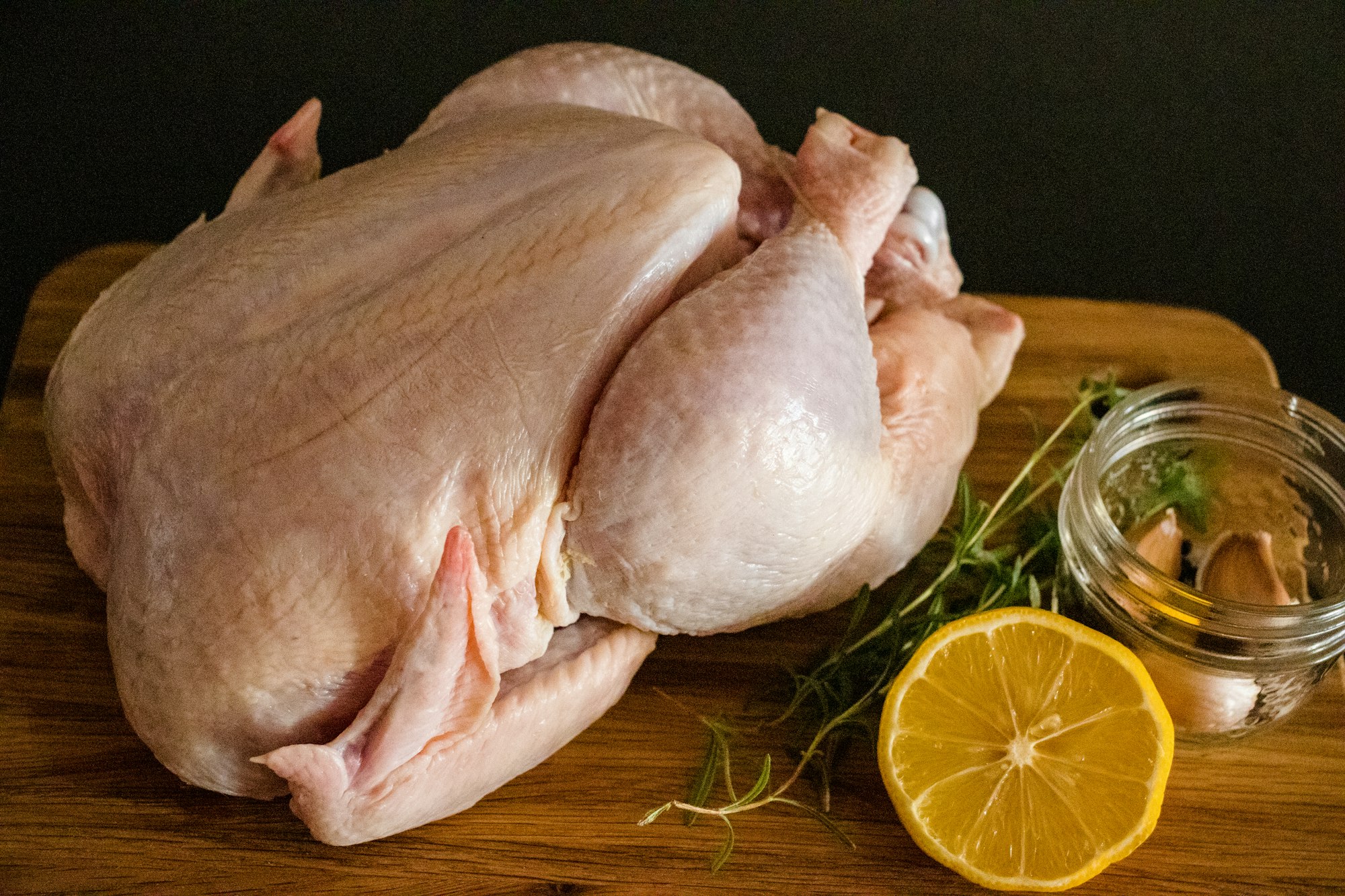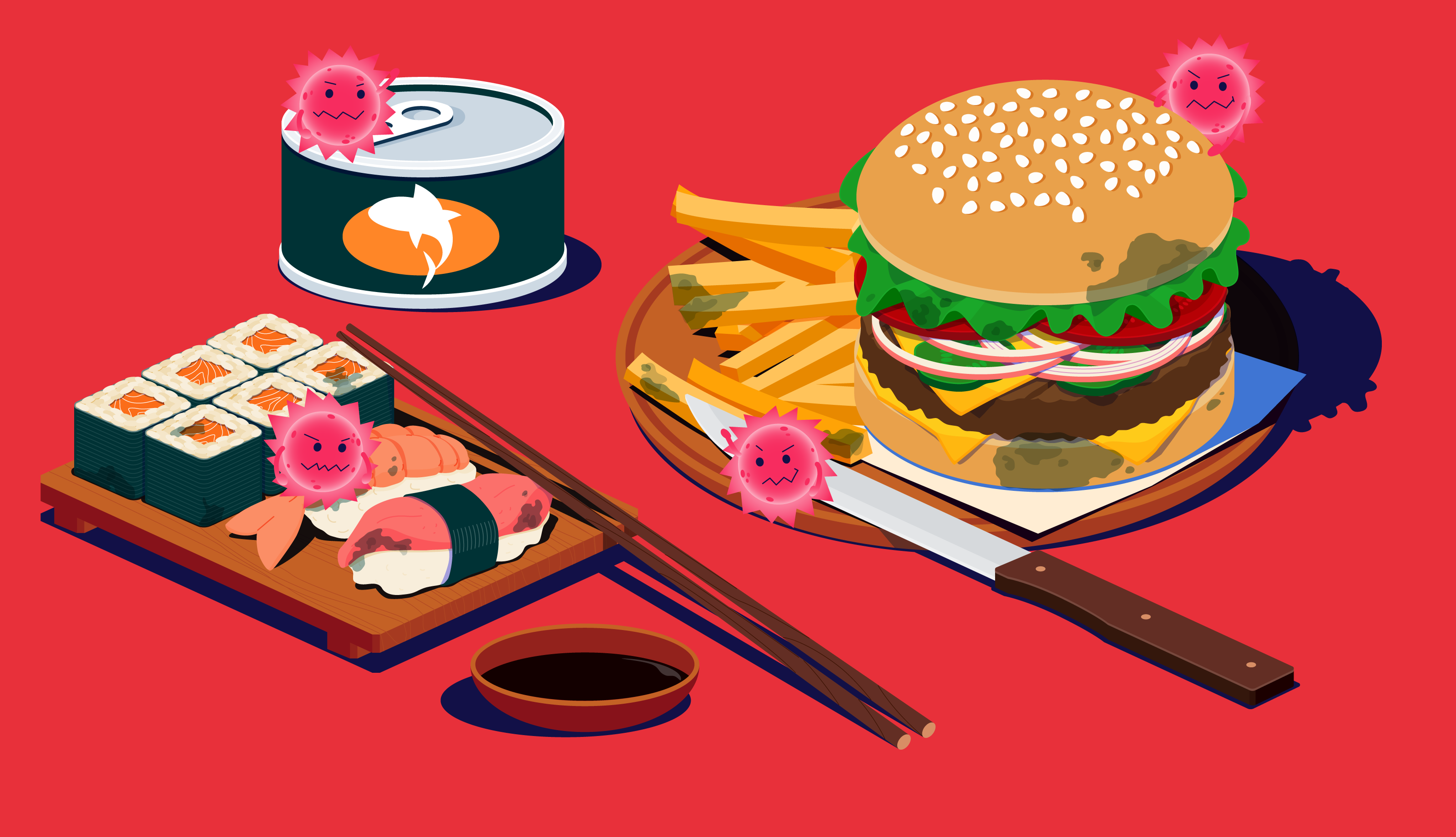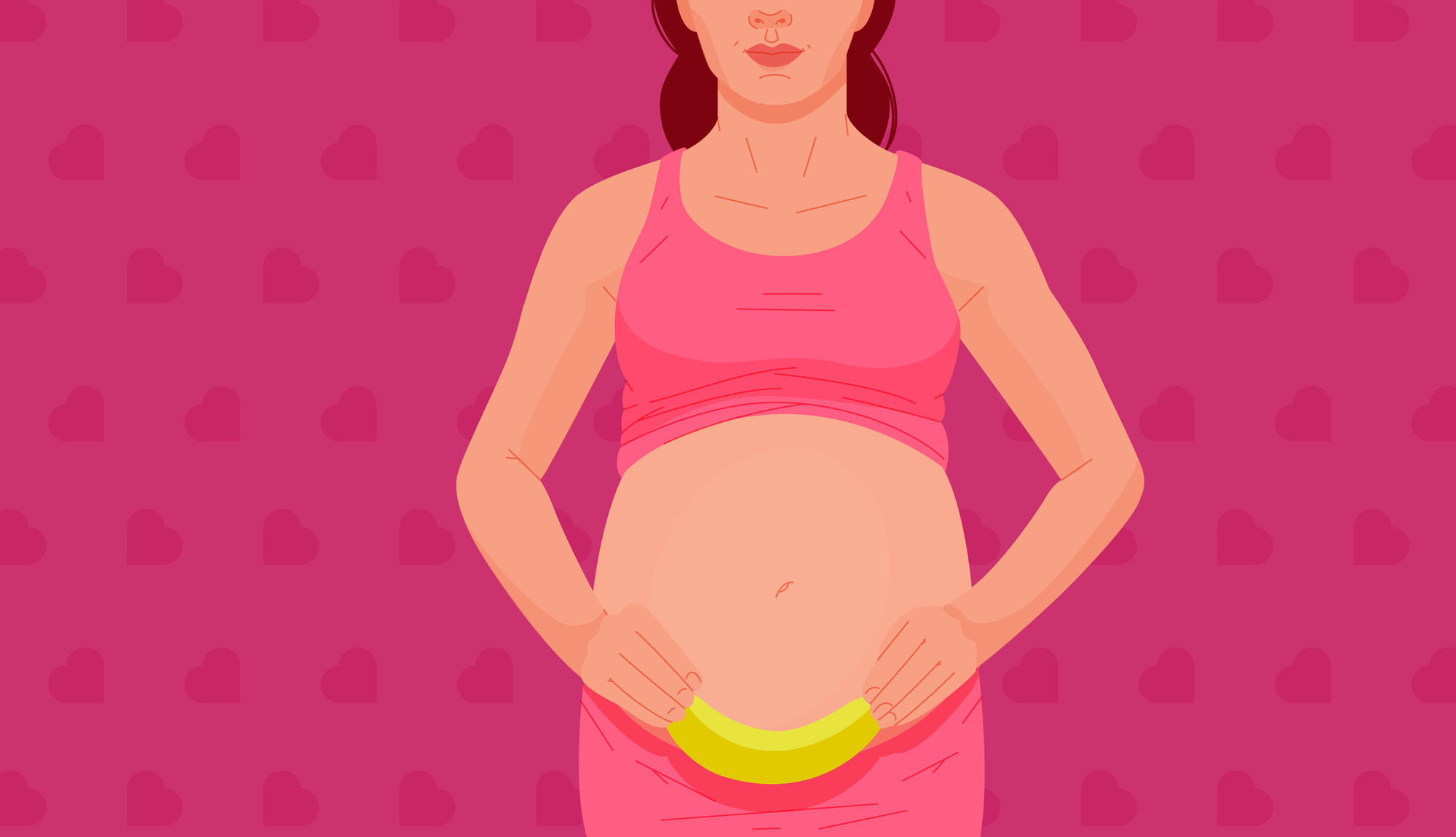From a dodgy kebab to eating food that’s been left out for too long, food poisoning can affect anyone. Although rarely serious, it’s not pleasant, but there’s lots you can do to prevent it from occurring.
Food poisoning is an illness brought on by eating contaminated, toxic, or spoiled food. It usually presents itself within hours of scoffing the contaminated culprit and causes symptoms like vomiting and diarrhoea.
Table of contents
- Food poisoning bacteria
- How does bacteria cause food poisoning?
- Conditions and illnesses associated with food poisoning
- Storage conditions that promote food poisoning bacteria
- How to destroy food poisoning bacteria
In this article, you’ll find out about bacteria that causes food poisoning, symptoms of food poisoning, how to prevent and destroy food poisoning bacteria, and how to store food correctly.
☝️DISCLAIMER☝This article is for informational purposes only. It is not intended to constitute or be a substitute for professional medical advice, diagnosis, or treatment.
Food poisoning bacteria
There are different types of bacteria that cause food poisoning which tend to contaminate specific foods. Some types of food poisoning bacteria are more common than others. For example, botulism is a very rare and deadly infection, whereas Campylobacter infections are quite common.
Common food poisoning bacteria and risky foods
| Bacteria | Risky foods |
|---|---|
| Botulism | improperly canned, preserved, or cooked foods |
| Campylobacter | undercooked meat and poultry, raw milk, cross-contamination |
| Clostridium perfringens | large meat joints, reheated gravy |
| E. coli | undercooked meat, milk, contaminated water, cross contamination |
| Listeria | pate, pre-packed salad, soft cheese, cook-chill foods |
| Norovirus | shellfish, foods touched by infected food workers, cross contamination |
| Salmonella | poultry, eggs, pork, beef, fruit, nuts |
☝Which type of bacteria causes the most cases of food poisoning?☝ Campylobacter jejuni is the most common cause of food poisoning, which usually comes from contaminated poultry or raw milk.
How does bacteria cause food poisoning?
Viruses and bacteria that cause food poisoning are found on just about all of the food you eat. However, cooking usually helps to kill them off before the food lands on your plate. Food which is eaten raw or is undercooked is a major source of food poisoning because it has escaped the cooking process.
6 main types of food poisoning bacteria and their symptoms
Sometimes, food encounters faecal matter too. The most common cause of this is someone with dirty or unwashed hands preparing food. Water can also be contaminated, and the germs can find their way onto food, particularly if washed in water, like salad items.
| Infection | Symptoms |
|---|---|
| Botulism | blurred or double vision, muscle weakness, slurred speech, difficulty breathing |
| Campylobacter | diarrhoea, fever, severe pain |
| Clostridium perfringens | diarrhoea, nausea, pain |
| E. coli | diarrhoea, vomiting, inflammation |
| Listeria | fever, headache, meningitis, septicaemia |
| Norovirus | diarrhoea, nausea, vomiting, stomach cramps |
| Salmonella | diarrhoea, fever, vomiting, stomach cramps |
☝Which area of the body can harbour the most food poisoning bacteria?☝ Your hands. They’re reported to be home to approximately 3000 bacteria consisting of over 150 species.
Conditions and illnesses associated with food poisoning

Even though anyone can get food poisoning, there are certain groups and conditions which make some people more susceptible to bacteria food poisoning. These individuals are more likely to become sick and experience a more severe illness:
- adults over 65 years old
- children under 5 years old
- pregnant women
- people with weakened immune systems
If you have a weakened immune system or an autoimmune disease, such as Crohn’s Disease, then you are at greater risk of developing a more serious food poisoning illness or complications later.
Interestingly, there is also research that has shown that some people retain a specific bacterium in their gut after having a bout of food poisoning, and so have an increased chance of developing Crohn’s later on in life.
☝TIP☝Discover the composition of your gut microbiome and your risk profile for Crohn’s disease with the Atlas Microbiome Test and the Atlas DNA Test.
What conditions do food poisoning bacteria need to grow?
Most foodborne illnesses are caused by bacteria, single-celled microbes which within a few hours could have multiplied into millions of cells. This happens when the conditions are perfect, such as warm or moist.

Cooking doesn’t always kill the bacteria. That’s because some bacteria can form spores which are resistant to heat and drying. So they survive the cooking process and begin growing again, leaving you at risk of illness.
Food contaminated with food poisoning bacteria would look and taste normal in most cases. This is why food poisoning is hard to avoid, especially if you’re eating out. If you have visibly spoiled food, please throw it away immediately and don’t eat it.
☝What temperature promotes the growth of food poisoning bacteria?☝ Food poisoning bacteria will multiply readily between between 5ºC and 63ºC.
Storage conditions that promote food poisoning bacteria
For food poisoning bacteria to contaminate your meal, they need ideal conditions to multiply, including temperature, pH, and time. That’s why it is important to store food correctly. Remember, the ideal growth conditions are between 5ºC and 63ºC.
That means perishable food needs to be kept either very cold or very hot to prevent illness. Make sure your fridge temperature is below 5ºC and your freezer is below -15ºC. Separate raw and cooked food, and store raw food, especially meat, on the bottom of your fridge to avoid juices dripping and contaminating other cooked foods.
☝How can you tell if food has enough bacteria to cause food poisoning?☝ You can’t. Contaminated food doesn’t have any specific taste, smell, or appearance.
How to destroy food poisoning bacteria
By taking specific precautions when preparing, eating, and storing food, you can reduce the risk of illness and destroy food poisoning bacteria before it’s too late. Here’s what you need to do:
-
Wash your hands thoroughly before and after handling food to prevent microbial transfer from your mitts to your grub. You should also give them a good wash after touching animals, including pets, the bin, blowing your nose, or going to the toilet. If you can’t wash them, at least sanitise.
-
Clean kitchen surfaces, especially worktops and chopping boards. Wash knives and other utensils in hot soapy water (or your dishwasher), and regularly launder your tea towels and dishcloths too.
-
Use separate chopping boards to prepare raw foods like meat and fish. This will help to avoid cross contamination with ready-to-eat foods. Raw meat can contain pathogenic bacteria that may be destroyed during the cooking process.
-
Follow the use-by dates. Don’t be tempted to risk it, especially with foods like raw meats, pre-prepared foods, and dairy that are susceptible to spoilage and contamination.
-
Cook food thoroughly, especially meat such as pork, poultry, sausages, burgers, and kebabs. This is essential to avoid food-borne illnesses. When cooked, the juices should run clear, the meat should be piping hot, and there should be no pink meat inside.
☝Freezing food kills bacteria that can cause food poisoning, true or false?☝ False. Freezing helps to reduce the levels of food poisoning bacteria, but doesn’t eliminate it. Cooking food thoroughly is the safest way to kill pathogenic bacteria.
Remember
- Food poisoning is caused by eating contaminated food.
- Different pathogenic bacteria have different symptoms
- Improper food storage and handling increases the risk of food poisoning.
- The young, elderly, people with a weak immune system, and pregnant women are at greater risk.
- Washing hands, storing food correctly, and cooking thoroughly all help to prevent food poisoning.
- You can’t see, smell, or taste food poisoning bacteria.
- Freezing food won't kill food poisoning bacteria.
- Centers for Disease Control and Prevention. People with a Higher Risk of Food Poisoning, 2019
- Fisher, E, L et al. Basis of Virulence in Enterotoxin-Mediated Staphylococcal Food Poisoning, 2018
- Food Hygiene for Food Handlers. Bacteria That Commonly Cause Food Poisoning, 1992
- Microbiology Society. Food Poisoning, 2020
- National Health Service. Botulism, 2018
- National Health Service. Food Poisoning, 2020
- Small, C, L et al. Acute Infectious Gastroenteritis Potentiates a Crohn’s Disease Pathobiont to Fuel Ongoing Inflammation in the Post-Infectious Period, 2016

















